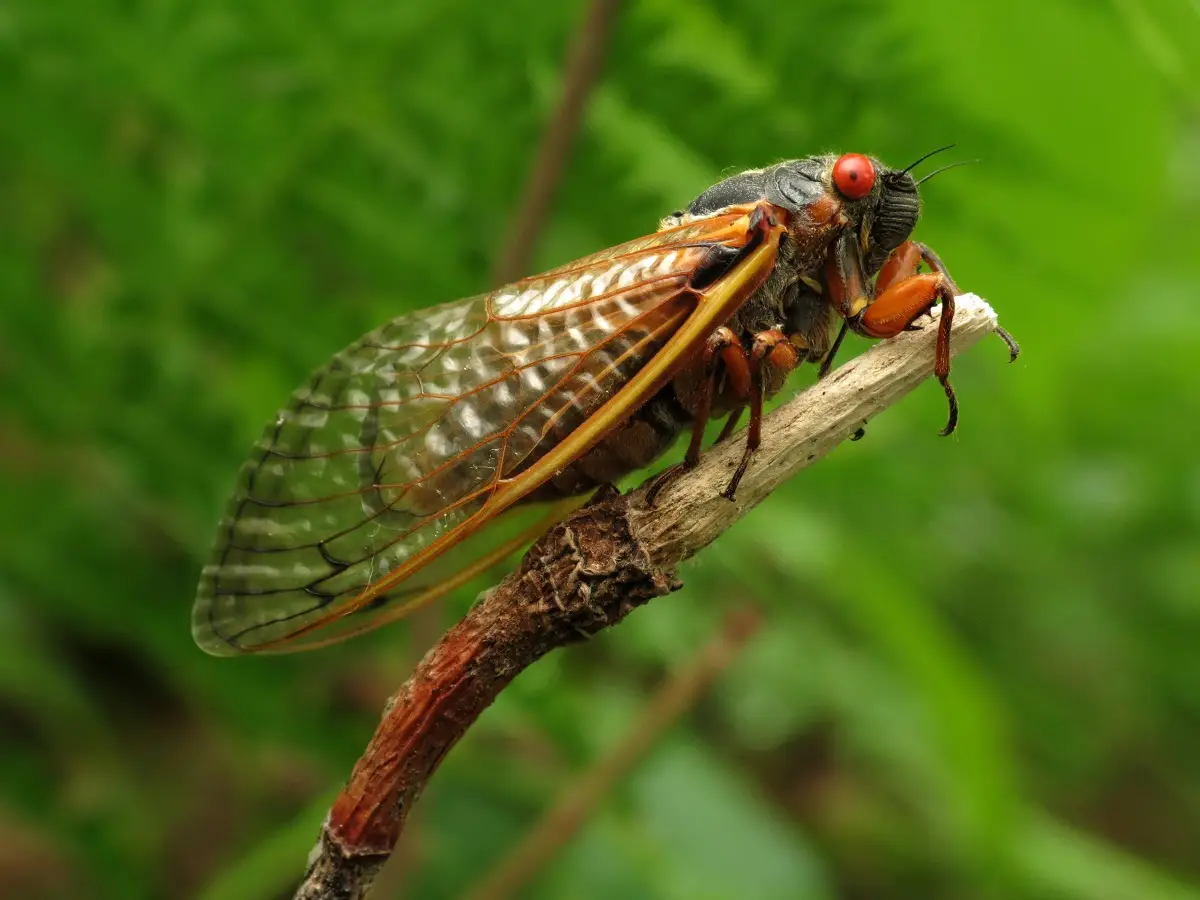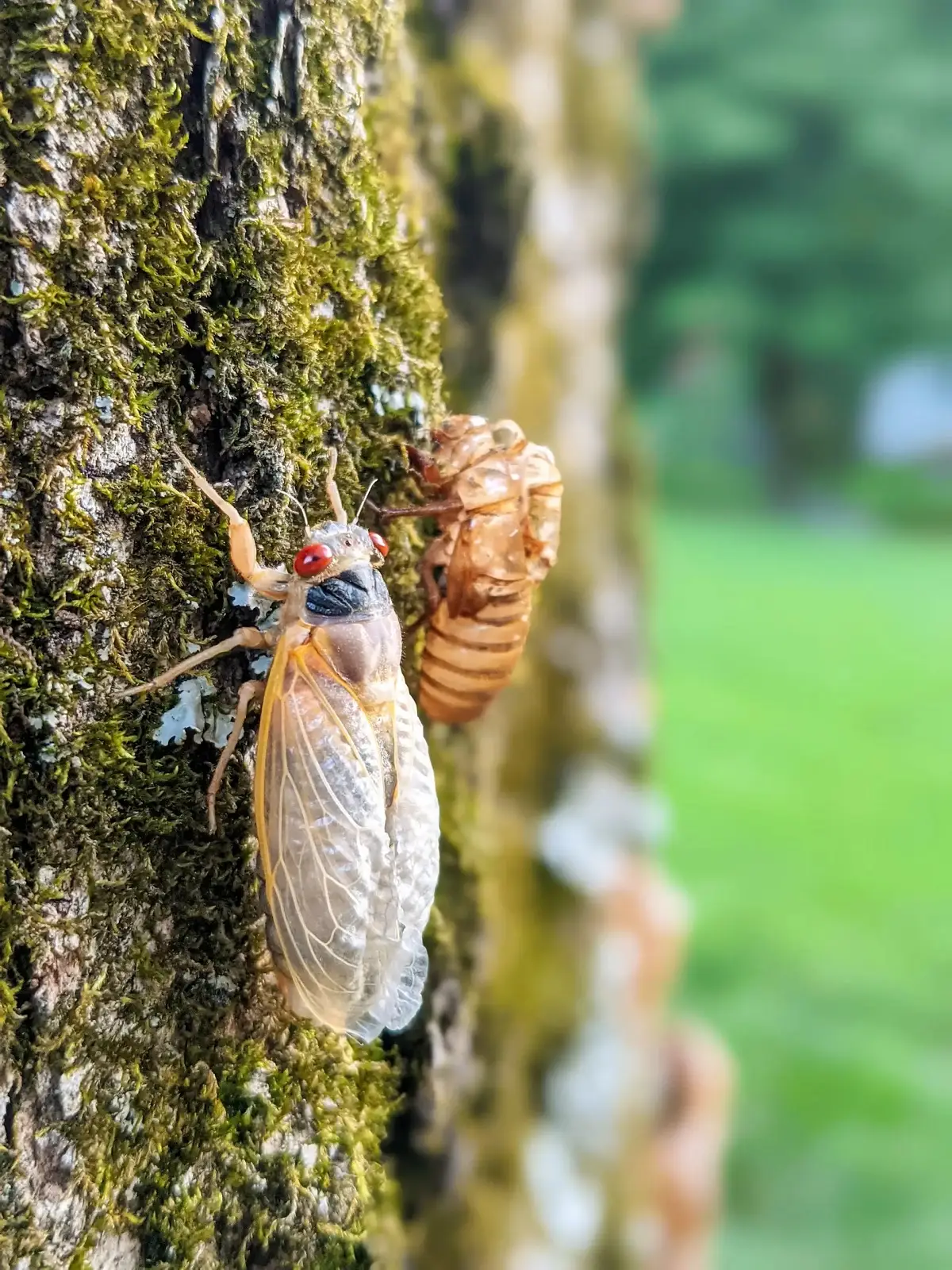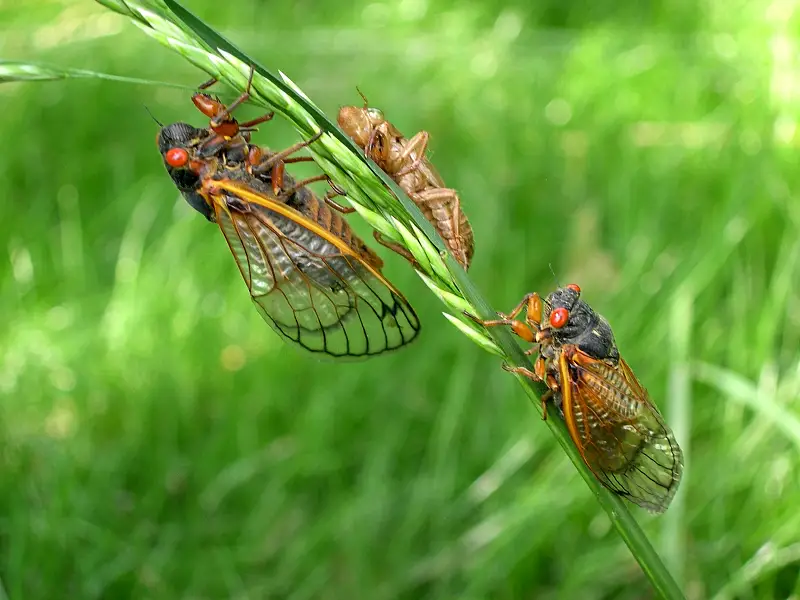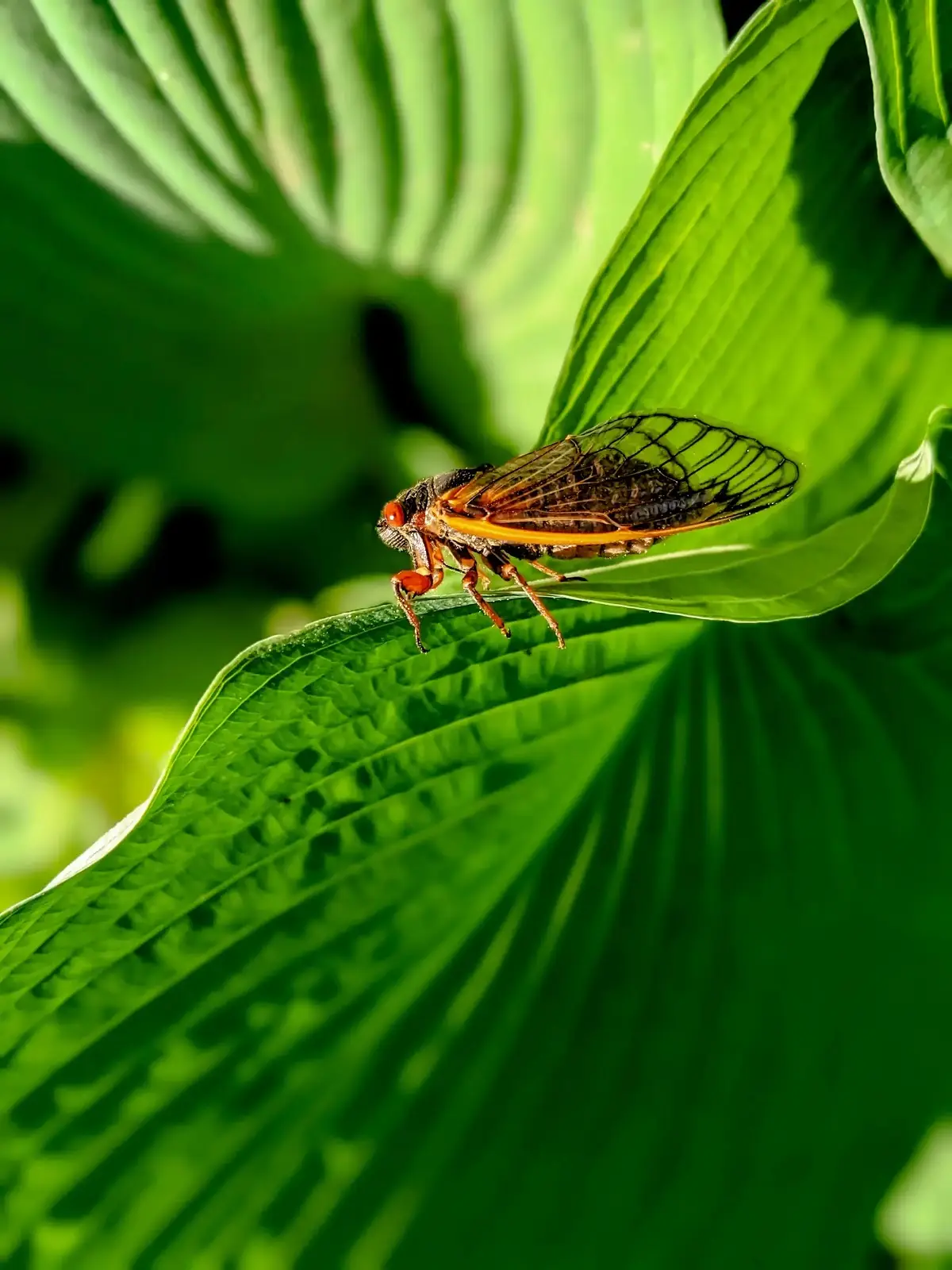Periodical cicadas emergence 2024 is a chance to witness a once-in-a-lifetime natural phenomenon where billions of cicadas will emerge from underground after their prime 13- or 17-year slumber, creating a buzzing spectacle and ecological boom.
Cicadas are fascinating insects known for their loud songs and long lifespans. There are more than 3,000 species of cicadas found all around the world in temperate to tropical climates . They are typically found in trees, feeding on watery sap from xylem tissue, and laying their eggs in a slit in the bark.
Cicadas have prominent eyes set wide apart, short antennae, and membranous front wings. They are medium to large insects, ranging in size from 2 to 5 cm (0.8 to 2 inches). One of the most interesting things about cicadas is their life cycle. Most cicadas spend most of their lives underground as nymphs, feeding on the roots of trees. This underground phase can last for years, from 2 to 17 years depending on the species! When the time comes to emerge, they climb up tree trunks and molt one last time. After they emerge as adults, they only have a few weeks to mate and lay eggs before they die.
Periodical cicadas emergence 2024
The most well-known cicadas are the periodical cicadas, which emerge in synchrony in massive broods every 13 or 17 years. These emergences can be deafening, as the males of the species use special organs on their abdomens to produce loud calls to attract mates. While their large numbers and loud songs may seem like a nuisance, cicadas are actually an important part of the ecosystem. They help to aerate the soil and provide a food source for birds, raccoons, and other animals.
Understanding Cicada Broods: Annual vs. Periodical
This spring, we’re witnessing a unique event with the emergence of cicadas in the eastern US. These fascinating insects belong to the Magicicada genus, also known as periodical cicadas. Unlike the “annual” cicadas you might see each summer, periodical cicadas follow a much longer schedule. Three Magicicada species have a 17-year life cycle, while four others emerge every 13 years. Scientists are still exploring why these prime numbers might be advantageous, with some suggesting they help cicadas avoid predators with synchronized life cycles.

The key difference between periodical and annual cicadas lies in their life cycles. Annual cicadas, despite their name, don’t emerge every year. However, their overlapping generations create the illusion of a constant presence throughout summer. Their nymphs spend a shorter time underground (2-5 years) compared to periodical cicadas.
Telling them apart is easy! Annual cicadas tend to appear later in the season, often around August. They’re also typically larger and greenish. In contrast, periodical cicadas emerge earlier in spring, are smaller, and have a striking black body with red eyes and orange accents on their wings and legs.
Finally, periodical cicadas are further categorized into “broods” based on their emergence year. These broods can include multiple Magicicada species, as long as they share the same 13-year or 17-year cycle.
Timing:
- This year’s periodical cicadas will emerge when the soil temperature reaches 64°F (18°C) at a depth of 8 inches (20 centimeters).
- This is expected to happen sometime in mid-May.
- The adult cicadas will only live for a few weeks, but their emergence will be staggered, creating a period with cicadas present for about six weeks.

Location:
- This spring, cicadas will emerge in parts of the Midwest and Southeast United States.
- Northern Illinois, along with southern Wisconsin, eastern Iowa, and northwest Indiana are likely to see cicadas from Brood XIII.
- Central and southern Illinois, most of Missouri, and scattered areas of Kentucky, Tennessee, Virginia, Maryland, North Carolina, South Carolina, Georgia, Alabama, Mississippi, Louisiana, and Arkansas are expected to have cicadas from Brood XIX.
- There might be a small overlap zone in central Illinois where the two broods’ ranges historically meet.

Rarity:
- A double emergence of Broods XIX and XIII, like this year, is a rare event, happening only every 221 years.
- The last time these two broods emerged together was in 1803, and the next time won’t be until 2245.
- However, the emergence of multiple cicada broods somewhere in the US is not as uncommon. It last happened in 2015 and will occur again in 2037.
Preparing for the Buzz: Cicada Season is Here
While a massive cicada overlap might not happen this year, even a single brood means plenty of insects. Here’s what to expect:
- Noise and Sheddings: Brace yourself for buzzing and molted exoskeletons littering your trees and shrubs. Look for cicadas in wooded areas near water.
- Mostly Harmless: Despite their numbers and loud calls, cicadas are no threat to humans or pets. They won’t bite or sting, and while dogs might find them a crunchy snack, it won’t cause harm.

- Protecting Young Trees: If you have young trees, cicadas might damage them while laying eggs. Cover them with cicada nets to prevent this.
- A Culinary Adventure (for some): Cicadas have been a food source for millennia, with a nutty flavor. However, avoid them if you have shellfish allergies due to a similar protein.
Contributing to Science:
- Cicada Safari App: Help scientists track cicada emergence! Download the free Cicada Safari app and submit photos of any cicadas you see. This data helps researchers understand how climate change impacts cicadas and predict future emergences.

We should encourage everyone to appreciate this unique natural phenomenon. Cicadas are fascinating insects, and witnessing their emergence is a rare opportunity. So, look up, listen closely, and enjoy the show!
Source: Uconn

